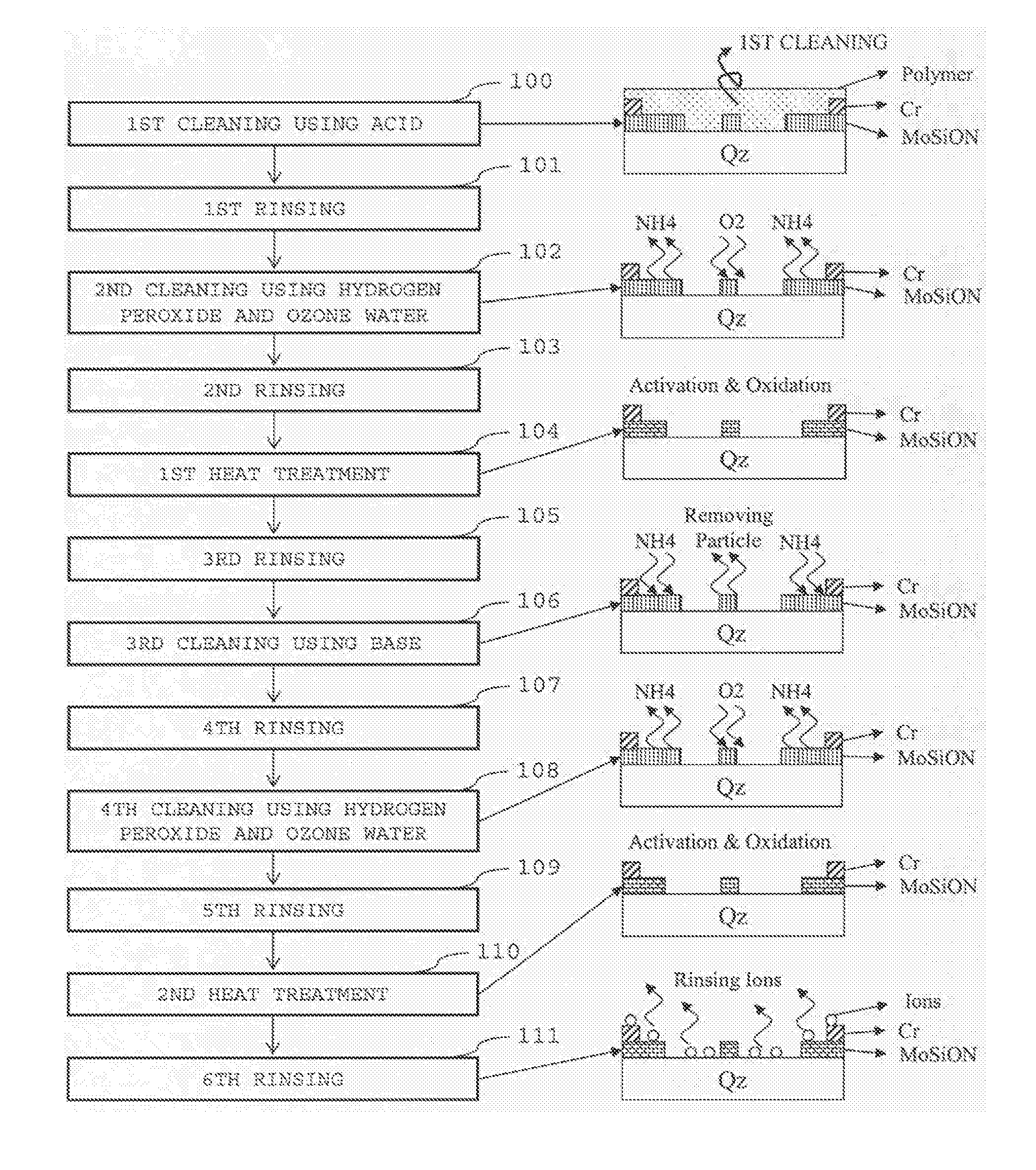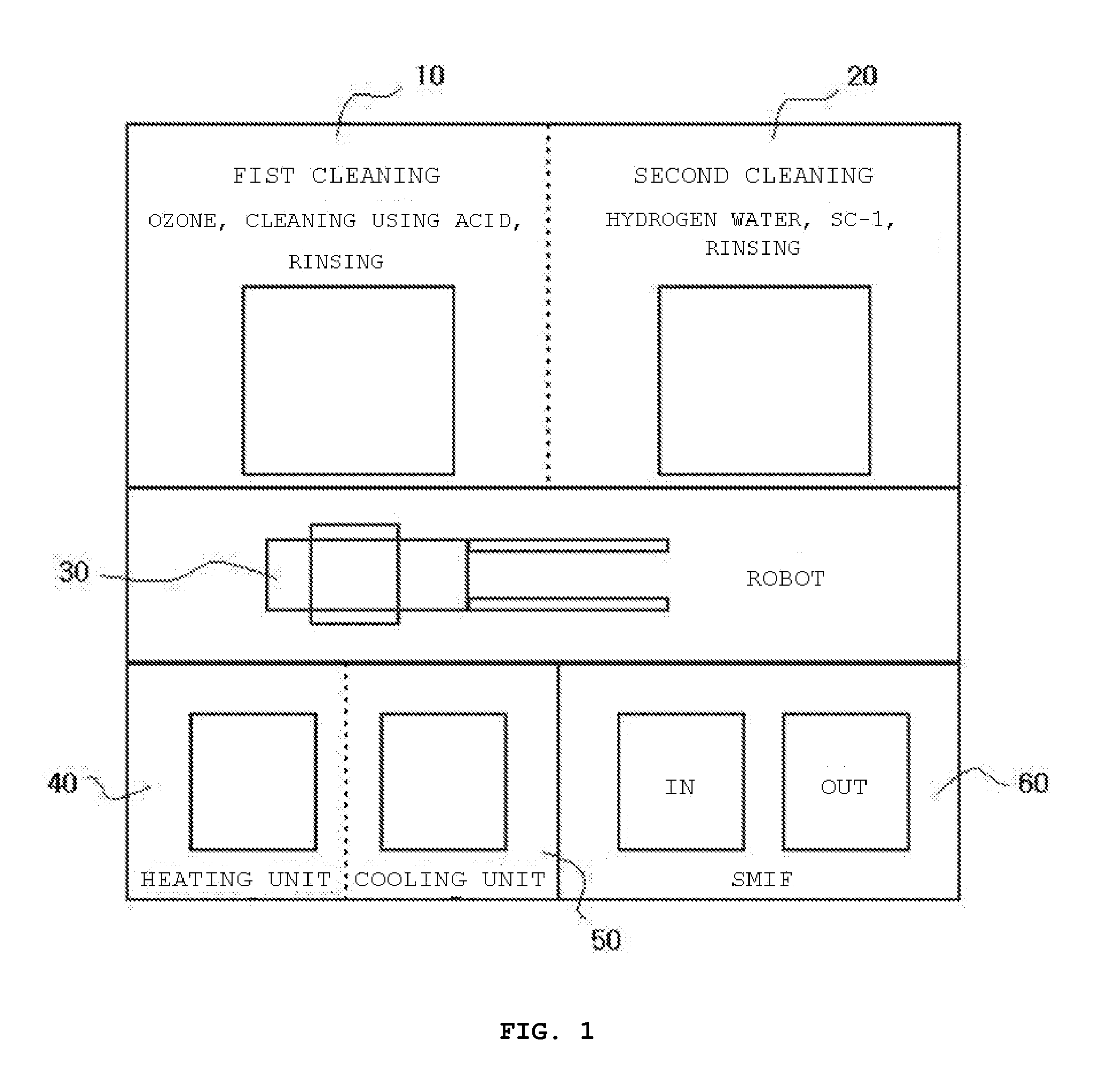Device and method for cleaning photomask
- Summary
- Abstract
- Description
- Claims
- Application Information
AI Technical Summary
Benefits of technology
Problems solved by technology
Method used
Image
Examples
Embodiment Construction
[0035] Hereinafter, a detailed description will be given of the present invention, referring to the accompanying drawings.
[0036]FIG. 1 illustrates a device for cleaning a photomask according to the present invention.
[0037] As shown in FIG. 1, the device for cleaning a photomask according to the present invention comprises a first cleaning unit 10, a second cleaning unit 20, a robot arm 30, a heat treating unit 40, a cooling unit 50, and a photomask carrier 60.
[0038] The first cleaning unit 10 cleans the photomask using acids to remove a polymer formed on the photomask.
[0039] Furthermore, the second cleaning unit 20 cleans the photomask using bases.
[0040] As well, the robot arm 30 carries the photomask.
[0041] Additionally, the heat treating unit 40 heat treats the photomask, which was cleaned using the acids and bases.
[0042] In the present embodiment, illustrative, but, non-limiting, examples of the heat treating unit include an electric heating furnace and a convection oven. ...
PUM
| Property | Measurement | Unit |
|---|---|---|
| Temperature | aaaaa | aaaaa |
| Haze | aaaaa | aaaaa |
| Optical properties | aaaaa | aaaaa |
Abstract
Description
Claims
Application Information
 Login to View More
Login to View More - R&D
- Intellectual Property
- Life Sciences
- Materials
- Tech Scout
- Unparalleled Data Quality
- Higher Quality Content
- 60% Fewer Hallucinations
Browse by: Latest US Patents, China's latest patents, Technical Efficacy Thesaurus, Application Domain, Technology Topic, Popular Technical Reports.
© 2025 PatSnap. All rights reserved.Legal|Privacy policy|Modern Slavery Act Transparency Statement|Sitemap|About US| Contact US: help@patsnap.com



